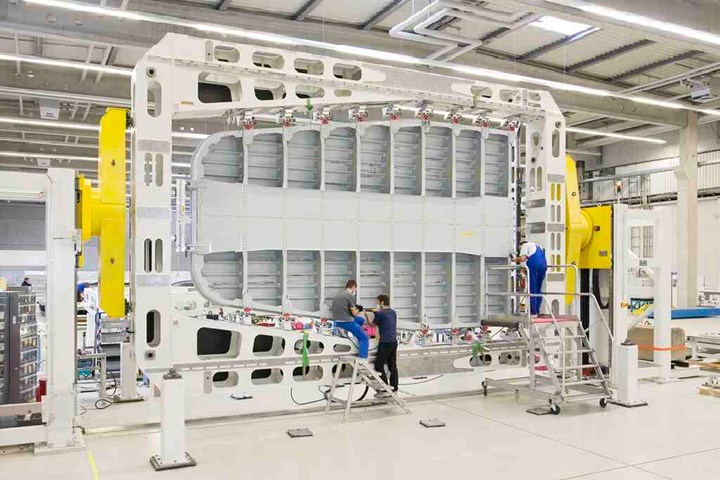From the CW Archives: Airbus A400M cargo door
The inaugural CW From the Archives revisits Sara Black’s 2007 story on out-of-autoclave infusion used to fabricate the massive composite upper cargo door for the Airbus A400M military airlifter.

The composite upper cargo door for the Airbus A400M military airlifter was, when developed, the largest aerostructure in the world fabricated using out-of-autoclave infusion. Photo Credit: Airbus
Welcome to the first edition of CW’s From the Archives series, where we explore some of the timeless, important and impactful stories from the publication’s past. My focus this week is the composite cargo door for the Airbus A400M military airlifter.
In 2007, I was less than a year into my job as editor-in-chief of CompositesWorld. The late Sara Black was our technical editor at the time and came to me with idea of developing a story about the composite cargo door of the A400M. The plane, which is now in service, was still in development at the time. We knew that composites were being applied extensively on the plane and had done one story in 2006 on the wing spars for it, but we had not done much else.
But, if a story was to be had, Sara was going to be the one to get it, and she finally convinced Airbus to share with us the details of the door’s fabrication. You can find the result here: “A400M cargo door: Out of the autoclave.”
Sara was naturally excited about all things composites, but this story and application were notable for a lot of reasons. First was the door’s size. It’s 7 meters long and 4 meters wide, which is large by 2007 and today’s standards. Second, it was the largest structural composite aircraft component produced to date using the out-of-autoclave vacuum-assisted resin infusion process. Third, it is a complex structure, featuring an outer skin, 16 stringers, nine crossbeams and an inner skin.
The story Sara wrote is our Inside Manufacturing (IM) content type, so it provides step-by-step details about how the door is designed and fabricated. And it provides great insight into what it takes to fabricate a complex infused composite structure. I enjoyed revisiting it and hope you do as well.
Related Content
-
Plant tour: Joby Aviation, Marina, Calif., U.S.
As the advanced air mobility market begins to take shape, market leader Joby Aviation works to industrialize composites manufacturing for its first-generation, composites-intensive, all-electric air taxi.
-
Plant tour: Spirit AeroSystems, Belfast, Northern Ireland, U.K.
Purpose-built facility employs resin transfer infusion (RTI) and assembly technology to manufacture today’s composite A220 wings, and prepares for future new programs and production ramp-ups.
-
Plant tour: Middle River Aerostructure Systems, Baltimore, Md., U.S.
The historic Martin Aircraft factory is advancing digitized automation for more sustainable production of composite aerostructures.
















